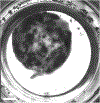A distal lung organoid model to study interstitial lung disease, viral infection and human lung development
- PMID: 37165073
- PMCID: PMC11486529
- DOI: 10.1038/s41596-023-00827-6
A distal lung organoid model to study interstitial lung disease, viral infection and human lung development
Abstract
Organoids have been an exciting advancement in stem cell research. Here we describe a strategy for directed differentiation of human pluripotent stem cells into distal lung organoids. This protocol recapitulates lung development by sequentially specifying human pluripotent stem cells to definitive endoderm, anterior foregut endoderm, ventral anterior foregut endoderm, lung bud organoids and finally lung organoids. The organoids take ~40 d to generate and can be maintained more than 180 d, while progressively maturing up to a stage consistent with the second trimester of human gestation. They are unique because of their branching morphology, the near absence of non-lung endodermal lineages, presence of mesenchyme and capacity to recapitulate interstitial lung diseases. This protocol can be performed by anyone familiar with cell culture techniques, is conducted in serum-free conditions and does not require lineage-specific reporters or enrichment steps. We also provide a protocol for the generation of single-cell suspensions for single-cell RNA sequencing.
© 2023. Springer Nature Limited.
Conflict of interest statement
Competing interests
H.-W.S. and Y.-W.C. hold patents pertaining to the lung organoid technologies described. The other authors declare no competing interests.
Figures









References
-
- Clevers H Modeling development and disease with organoids. Cell 165, 1586–1597 (2016). - PubMed
Publication types
MeSH terms
Grants and funding
LinkOut - more resources
Full Text Sources
Other Literature Sources
Medical
Molecular Biology Databases

